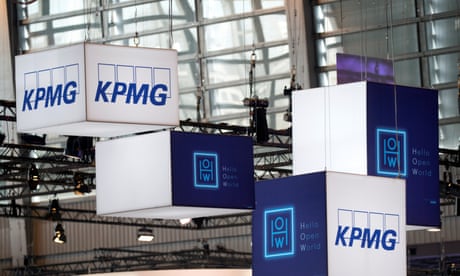1. Main Features of Oligopolistic Markets and the Concept of Interdependence:
Features of Oligopolistic Markets:
- Few Large Firms: Oligopolistic markets are characterized by a small number of dominant firms that control a significant share of the market. Each firm's actions can significantly impact the market dynamics.
- Barriers to Entry: Entry barriers, such as high initial costs, brand loyalty, and economies of scale, make it difficult for new firms to enter and compete effectively.
- Differentiated Products: Firms often differentiate their products through branding, features, or quality to create a loyal customer base and reduce direct competition.
- Interdependence: One of the key features of oligopolistic markets is interdependence, where the actions of one firm directly influence the decisions of others.
Concept of Interdependence:
- Interdependence refers to the mutual dependence of firms in an oligopolistic market. Each firm must carefully consider its competitors' potential reactions when making strategic decisions, such as pricing or product development.
- Since there are only a few major players in the market, the actions of one firm can cause a ripple effect on other firms' profits and market shares.
- Firms in an oligopoly are highly sensitive to each other's strategies and reactions, leading to strategic behavior and intense competition.
2. Price and Non-Price Competition, Price Leadership, Collusion, and Price Wars:
Price Competition: In an oligopolistic market, firms may compete primarily on price, trying to attract customers by offering lower prices than their competitors. Price competition can lead to price wars where firms continually lower prices to gain a competitive edge.
Non-Price Competition: Oligopolistic firms may also engage in non-price competition, where they differentiate their products through branding, advertising, product quality, customer service, or unique features. Non-price competition aims to create brand loyalty and customer preferences.
Price Leadership: In some oligopolistic markets, one dominant firm (the price leader) may set the price, and other firms follow suit. The price leader's actions influence market prices, and other firms align their pricing strategies accordingly.
Collusion: Collusion occurs when firms in an oligopoly coordinate their actions to maximize joint profits. This can take the form of price-fixing agreements or output quotas to limit competition and maintain high prices.
Price Wars: Price wars may occur in oligopolistic markets when firms aggressively lower prices to gain a larger market share. However, price wars can lead to lower profits for all firms involved, making it a risky strategy.
3. Potential Costs and Benefits of Oligopoly:
Benefits:
- Economies of Scale: Oligopolistic firms may benefit from economies of scale, leading to lower costs and competitive prices for consumers.
- Innovation: Intense competition among oligopolistic firms can drive innovation and product development to attract customers.
- Non-Price Competition: Non-price competition can enhance product diversity and customer satisfaction, as firms focus on product quality and unique features.
Costs:
- Reduced Competition: Oligopolistic markets may experience reduced competition, leading to higher prices and fewer choices for consumers.
- Collusion and Cartels: Collusive behavior can lead to artificially high prices and restrict consumer welfare.
- Potential for Price Wars: Price wars can harm firms' profits and create instability in the market.
4. Using Game Theory to Evaluate Interdependent Behavior in Oligopolistic Markets:
Game theory is a mathematical tool used to analyze strategic interactions between decision-makers. In oligopolistic markets, firms' actions are interdependent, making game theory relevant for understanding their behavior.
Game theory models, such as the Prisoner's Dilemma or the Cournot Model, can be used to evaluate the strategic decisions of firms in an oligopoly. These models consider factors like pricing, output, and advertising decisions. Game theory helps identify possible equilibrium outcomes and determine whether firms can achieve mutual benefits through cooperation or if individual self-interest leads to suboptimal results.
However, game theory also highlights the potential for competitive behaviors and non-cooperative strategies that can lead to less efficient outcomes, such as collusive behavior or price wars.
In conclusion, oligopolistic markets are characterized by a small number of dominant firms with interdependent behavior. These firms may engage in price and non-price competition, practice price leadership, collude, or engage in price wars. While oligopolies can benefit from economies of scale and innovation, reduced competition and the potential for anti-competitive behaviors are significant concerns. Game theory provides valuable insights into the strategic interactions in oligopolistic markets, helping economists and policymakers understand the implications of firms' interdependent behavior.
Let's incorporate examples to illustrate the concepts and evaluation of oligopoly:
1. Main Features of Oligopolistic Markets and the Concept of Interdependence:
Example: The smartphone market is a classic example of an oligopolistic market. There are a few dominant players like Apple, Samsung, and Huawei that control a significant share of the market. Each firm's actions have a substantial impact on the industry, and they are highly sensitive to each other's decisions.
Concept of Interdependence: When Apple introduces a new iPhone model, Samsung and Huawei closely observe the features and pricing. If Apple's new model receives a positive response and gains market share, Samsung and Huawei might adjust their product development and pricing strategies to compete effectively.
2. Price and Non-Price Competition, Price Leadership, Collusion, and Price Wars:
Price Competition: The airline industry demonstrates price competition. When one major airline lowers ticket prices on a particular route, others may follow suit to attract more passengers.
Non-Price Competition: The soft drink industry is an example of non-price competition. Coca-Cola and PepsiCo engage in extensive advertising, marketing campaigns, and product differentiation to build brand loyalty among consumers.
Price Leadership: In the automobile industry, Toyota often acts as a price leader. When Toyota adjusts its car prices, other automakers tend to follow the price changes in response.
Collusion: The oil industry has faced allegations of collusion among major oil-producing countries. OPEC (Organization of the Petroleum Exporting Countries) is an example of a group of oil-producing countries that coordinate output levels to control oil prices.
Price Wars: The smartphone market has experienced price wars. When one company launches a new model with competitive pricing, other firms may respond by lowering their prices to maintain market share.
3. Potential Costs and Benefits of Oligopoly:
Benefits:
- Economies of Scale: Large firms like Samsung or Apple benefit from economies of scale in production, leading to cost efficiencies and lower prices for consumers.
- Innovation: Rivalry between firms in the smartphone market drives continuous innovation, resulting in new features and technological advancements.
- Non-Price Competition: In the soft drink industry, Coca-Cola and PepsiCo's non-price competition through extensive advertising and marketing campaigns enhances brand loyalty and attracts consumers.
Costs:
- Reduced Competition: In the airline industry, the dominance of a few major carriers on specific routes can lead to higher ticket prices for travelers.
- Collusion and Cartels: Collusive behavior among oil-producing countries can artificially inflate oil prices, negatively impacting consumers and industries reliant on petroleum products.
- Potential for Price Wars: Price wars among smartphone manufacturers can lead to lower profits and make it challenging for firms to invest in research and development.
4. Using Game Theory to Evaluate Interdependent Behavior in Oligopolistic Markets:
Example: In the video game console market, both Sony (PlayStation) and Microsoft (Xbox) compete for market share. Game theory models can analyze their strategic interactions, such as pricing, exclusive game titles, or console features. By understanding the firms' interdependent behavior, we can predict how they might respond to each other's actions and make strategic decisions.
Game theory helps identify whether firms may benefit from cooperation, like jointly developing cross-platform games, or whether they may engage in aggressive pricing and promotional strategies to gain a competitive edge.
Conclusion: Oligopolistic markets showcase complex strategic interactions among dominant firms. While they can benefit from economies of scale, innovation, and non-price competition, the lack of competition and potential for anti-competitive behavior raise concerns. Game theory provides valuable insights to understand firms' interdependent behavior and assists policymakers in creating regulations to foster healthy competition and consumer welfare.


